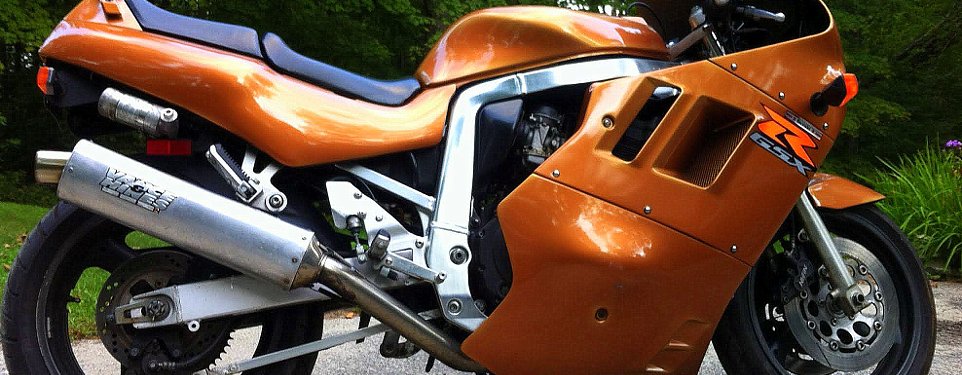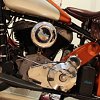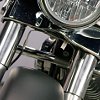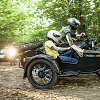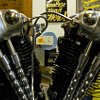Yes, you know what a “squid” and a “cage” are.
Sure, those little gems of our motorcycling lexicon are interesting to non-riders and the very greenest rookies, but even seasoned motorcyclists can still come across a new colloquialism or nickname from the colorful history of motorcycles and the people who ride them. How many of these do you know?
Tickover
This is a term that I had read in a few service manuals, but never really understood until a Limey explained it to me when I was pretty young. It means “idle” in Britain. We say the engine is at an idle, they say it’s ticking over.

Suicide clutch
Early clutches on motorcycles were foot-operated rocker clutches that had friction discs at the pedal. These allowed the rider to remove his foot, yet the clutch would remain engaged. Racers would often remove the friction discs, meaning the clutch was then spring-loaded, much like an automobile’s clutch pedal. Bikes with suicide clutches were so named because if a rider stopped at an intersection, lost his balance and lifted the left foot from the clutch, the bike was free to lurch ahead. This modification is typically seen with a jockey shifter, which helps a rider make faster shifts by relocating the gearshift lever, and no front brake. (The combo makes dealing with stop signs on hills a truly engaging experience!)

Slingshot
“Slingshots” are 1988-1991 Suzuki GSX-R750 motorcycles. Suzuki had re-worked the bore and stroke of their 750 engine that year, making the motors particularly oversquare. Suzuki worked with Mikuni to develop carburetors that would work well with the engine. The resultant carburetors were called “slingshots,” with Suzuki going so far as to even put the word right on the fairings of some motorcycles. One part marketing, one part performance, blend well, and a nickname was born.

Cowbells
These are the decorative shrouds that cover the telescoping fork tubes first seen on Harley Hydra-Glide front ends. They get their name from the ringing sound they produce when something strikes them or when they loosen and move around. You might also hear these called the “beer cans.”

Hack
This term is a colloquialism for a motorcycle sidecar. Also used as “sidehack.”
Hoon
A term originating south of the equator, “hoon” is the equivalent of a hooligan. The term is typically reserved for the pilots of boats, cars, and motorcycles who are a bit antisocial in the operation of said vehicle. Plainly put, a hoon generally puts on a little show for anyone who happens to be watching, often to the chagrin of more safety-oriented drivers. A flexible word, “hoon” can also be used as a verb to describe the commission of said acts.

Jugs
A motorcycle jug is the cylinder. It’s a metal tube that is generally surrounded either by cooling fins (air-cooled jugs) or coolant galleries (liquid-cooled jugs) in which the piston travels. Motorcycle engines are different than automotive engines because the structure that supports the crankshaft is generally separate and distinct from the structure that houses the pistons.

Frog eyes
Most motorcycle aficionados can identify a Knucklehead engine, and one of the ways some folks do that is by identifying the large hexagonal rocker shaft nuts. Knucks are interesting bikes. Their technology was very advanced for the time, and Harley was making lots of changes to the engines in the first year of production. One of the changes was to those rocker shaft nuts. Prior to the big hex nuts we’re accustomed to seeing, Harley actually used a small set of domed covers held in place by a screw, lending themselves to the amphibious moniker. Are they rare? It’s believed that only about the first 250 Knucks had frog eyes. If you see an original set, you’re looking at a pretty low-production old part.

Tickler
A tickler is a component of a carburetor. The term is most strongly associated with older Brit bikes. The tickler is an enrichening device that consists of a small shaft that extends into the float bowl. When held down, the float allows fuel past the needle, flooding the carburetor. The tickler enables a rider to start the motorcycle when the engine is cold due to the rich condition caused by the flooding. It's a redundant device that often enables the removal of the sometimes-problematic choke on Amals.
Konging


I hope you learned a term or two and I’d recommend you use your newfound knowledge to win a beer or two from a buddy in a bar bet.































 Riders Preferred Membership
Riders Preferred Membership
